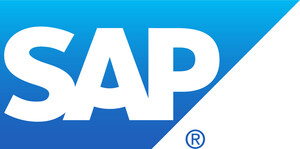WALLDORF, Germany, June 29, 2015 /PRNewswire/ -- SAP SE (NYSE: SAP) today announced findings from an Economist Intelligence Unit (EIU) analysis of six companies, large and small, that have implemented cloud solutions specifically designed to foster collaboration in the workplace. The findings tell a story of how cloud technology can be planned, structured and implemented to help drive innovation and growth. It depicts several best practices that can be helpful to other firms when planning their own cloud journey.
The Tipping Point for Change
The analysis shows that many companies will reach a tipping point where current systems have become taxed by data siloes and collaboration has slowed to a crawl due to duplication of effort, compartmentalization of knowledge and blocking of cross-enterprise initiatives. Companies now are choosing to take a major step forward by moving into the cloud with the intention of leapfrogging to broader integrated solutions over quick-fix options to allow for innovation, growth and competitive advantage.
Solve Real Business Problems
Several of the unexpected business outcomes included:
- Greater utility of knowledge – Users were able to access knowledge that was historically stored in distant or siloed parts of the enterprise, which facilitated sharing, improved collaboration and helped evolve the intellectual outputs of the firm.
- Platform for innovation – Companies reported an improvement in the innovation process. With the cloud, users can tap into fresh ideas, rank and prioritize them and make them available and actionable.
- Pervasive availability of information – Companies highlighted that the availability and accessibility of information drove cost-saving efficiencies in operations, such as shorter dispatch times, more advanced billing cycles and reduced duplication of effort.
These unexpected benefits became apparent after deployment, included insight into new business opportunities and extended operational improvements to adjacent business areas.
"High performing organizations leverage connected networks of customers, employees and partners to improve customer engagement, build meaningful products and operate profitability," said Sameer Patel, senior vice president, Products and Go-to-Market, Social Software Product Management LABS, SAP. "By enabling your network of experts across your ecosystem to collaborate easily to improve every business process, you see a direct impact on key performance indicators."
Best Practices When Taking the Leap
The experiences of these companies are beacons for others who have reached their own tipping point in their cloud adoption. The analysis by the Economist Intelligence Unit identifies several keys to success for leveraging the cloud. They include using a wide net of stakeholders across business functions (both inside and outside the organization) from the earliest planning until final implementation, taking an incremental approach to the development and scaling of the cloud operation and following a practice of continuous improvement. By staying open to adding new features based on a combination of the original implementation plan and continuing feedback from users, the system can get smarter and more effective over time – a key benefit of cloud computing.
This connected and integrated approach to adopting cloud presents a very real opportunity for organizations to break down silos and bring data to life to drive innovation, customer engagement and, ultimately, sustainable competitive advantage.
Download "The collaborative cloud" report here for free.
For more information, visit the SAP News Center. Follow SAP on Twitter at @sapnews.
Media Contact:
Janice Tsoules, +1 (650) 223-4817, [email protected], EDT
Any statements contained in this document that are not historical facts are forward-looking statements as defined in the U.S. Private Securities Litigation Reform Act of 1995. Words such as "anticipate," "believe," "estimate," "expect," "forecast," "intend," "may," "plan," "project," "predict," "should" and "will" and similar expressions as they relate to SAP are intended to identify such forward-looking statements. SAP undertakes no obligation to publicly update or revise any forward-looking statements. All forward-looking statements are subject to various risks and uncertainties that could cause actual results to differ materially from expectations. The factors that could affect SAP's future financial results are discussed more fully in SAP's filings with the U.S. Securities and Exchange Commission ("SEC"), including SAP's most recent Annual Report on Form 20-F filed with the SEC. Readers are cautioned not to place undue reliance on these forward-looking statements, which speak only as of their dates.
Logo - http://photos.prnewswire.com/prnh/20110126/AQ34470LOGO
SOURCE SAP SE
Related Links
WANT YOUR COMPANY'S NEWS FEATURED ON PRNEWSWIRE.COM?
Newsrooms &
Influencers
Digital Media
Outlets
Journalists
Opted In




Share this article